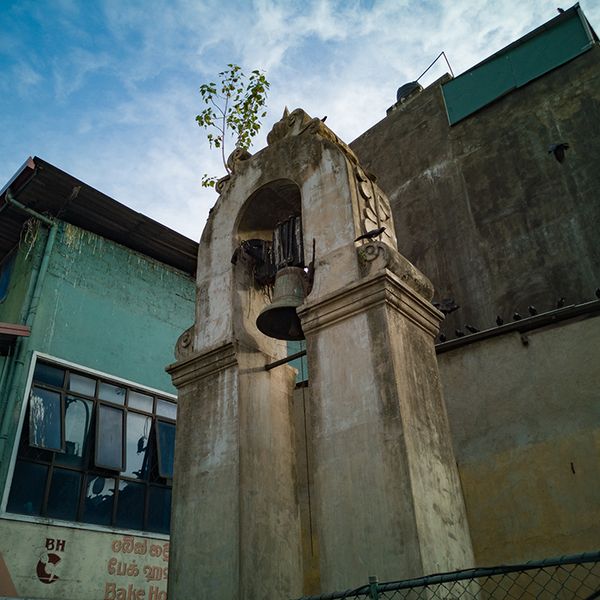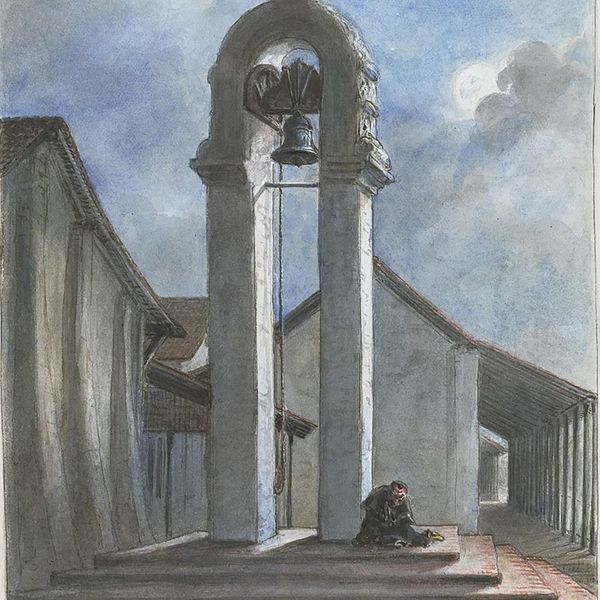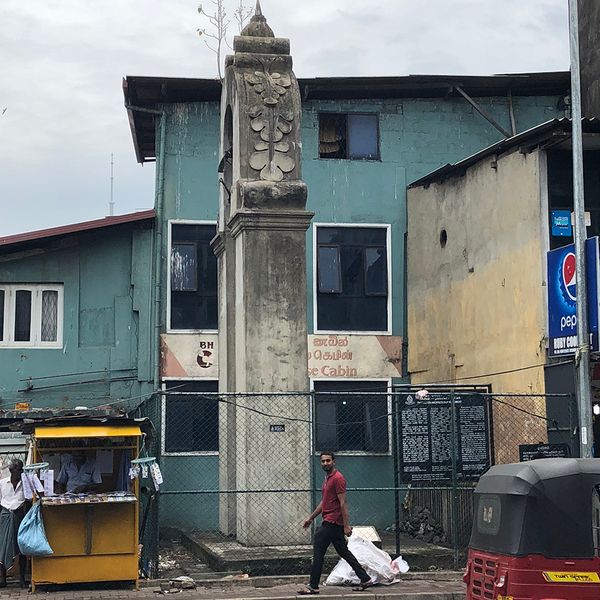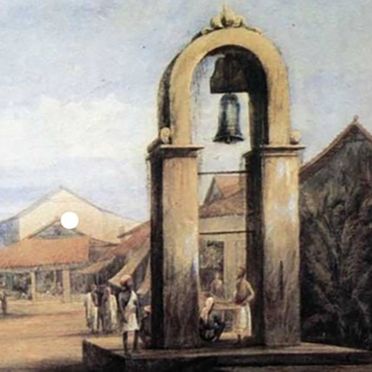
Last remains of old Portuguese fort with crocodile infested moat



- Main Street, Colombo 11
Gate that is actually a bell tower

Today, Kayman’s Gate is tucked away into a little spot, so nondescript that you will probably miss it if you are not specifically looking for it. Actually, scrap that, what you see today isn’t even the original ‘gate’, which was actually a huge tunnel leading through the thick ramparts of the Portuguese Fort, the main entrance from the East. What remains today is only a bell tower, which used to be next to it. It holds a bell taken by the Dutch from an abandoned Portuguese church in the fallen kingdom of Kotte. Why the bell? The Dutch used it to sound the alarm when the gates were closing, and later after the walls were destroyed, to summon people for worship.
Crocodile gate
Is your head swimming with the historical intricacies yet? At least you’re not swimming in water teeming with crocodiles, which is what you might have found yourself doing if you were suddenly transported back a few centuries to the exact spot at which you are standing right now. This gate was originally called ‘Queen’s Gate’ by the Portuguese, but under the Dutch quickly became known as ‘Kayman’s Gate’ (from the Dutch word for crocodile) because of all the happy reptiles ready to gobble up garbage (and unwanted visitors) just below the drawbridge.
Famous song

In a famous Sri Lankan song, Paru Paalamen of local celebrity singer Sunil Edirisinghe is about the gate. Drop his name among locals here to get some street cred or free accharu.
